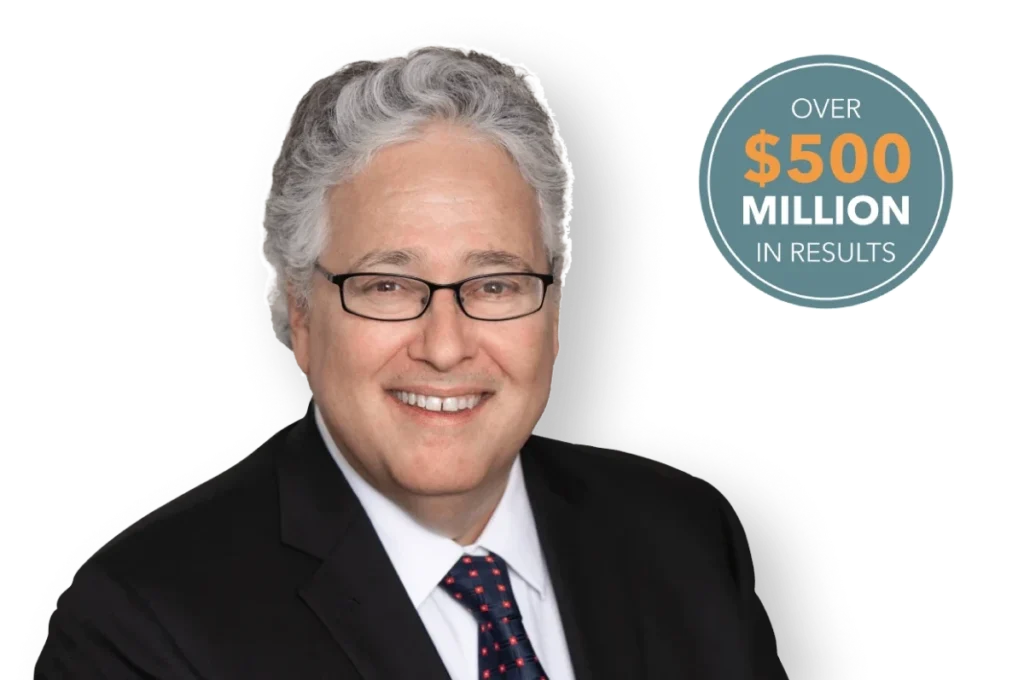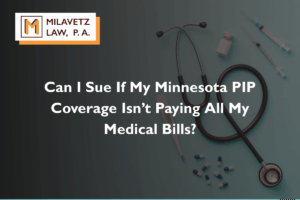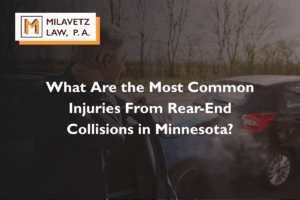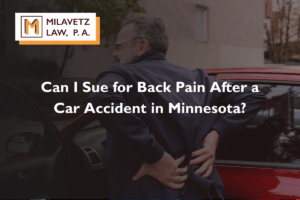Minnesota is a no-fault insurance state. Therefore, you must first file a claim for economic damages from a car accident with your insurance company. If you have damages exceeding your policy limits, you typically seek them from the at-fault driver’s insurance company. However, when an uninsured driver hits you, that’s not an option, but you can sue them for damages.
Speak with our experienced Minnesota car accident lawyers at Milavetz Injury Law, P.A., so we can guide you through what to do after an accident with an uninsured driver.

Does Minnesota Require All Drivers To Have Certain Levels of Insurance Coverage?
Minnesota requires drivers to have minimum insurance coverage to operate vehicles on its roads. There are four categories of required motor vehicle insurance coverage:
- Personal injury protection, or PIP, is no-fault insurance that covers certain economic damages. Minimum coverage is $40,000 per person per accident, of which $20,000 covers hospital or medical expenses and $20,000 covers lost wages and other expenses.
- Liability covers claims made by other drivers against you. The required minimums are $30,000 for injuries to one person, $60,000 for injuries to multiple people, and $10,000 for property damage.
- Uninsured motorist, or UM, protects you in accidents with uninsured drivers or hit-and-run accidents. You must carry $25,000 for injuries to one person and $50,000 for injuries to multiple people.
- Underinsured motorist, or UIM, covers you in accidents when the other driver’s liability limit doesn’t cover all our damages. Minimum coverage is $25,000 for injuries to one person and $50,000 for injuries to multiple people.
You can purchase additional coverage in each category for added protection.
Can You File Both a UM Claim and a No-Fault Claim in Minnesota?
You can file a no-fault PIP and a UM claim in Minnesota for the same accident. Your UM coverage replaces the liability coverage the uninsured driver failed to purchase.
No-Fault Claims
Minnesota is a no-fault insurance state. If you are in an accident, you first turn to your PIP coverage to pay for your basic economic losses. With minimum coverage of $40,000, Minnesota PIP benefits include the following:
- Medical expenses: Up to $20,000 for reasonable expenses, including hospital and doctor care, rehabilitation, prescription drugs, and other care
- Disability and income loss: Compensation for 85 percent of wage loss up to a maximum of $500 per week
- Funeral and burial expenses: Up to $5,000 for reasonable expenses, including cremation or delivery of remains under the Anatomical Gift Act
- Replacement services: Up to $200 a week for the reasonable value of lost care and maintenance of the home or the cost of hiring someone to provide that care
- Survivors economic loss benefits: Up to $500 a week for loss of money and other tangible financial benefits dependents would have received from the deceased
- Survivors replacement services: Up to $200 per week for services the deceased would have provided in the household
You must file a PIP claim with your insurance company within six months of your accident date. It is best to file your claim quickly so that future bills can go directly to your insurance carrier.
UM Claims
If the party at fault for your accident does not have insurance, or you were a hit-and-run victim, you can turn to your UM coverage. It pays for damages above what PIP provides. For example, if you have $30,000 in medical expenses from an accident with an at-fault uninsured driver, you can claim $20,000 from your PIP coverage and $10,000 from your UM coverage.
Unlike PIP, UM coverage allows you to seek non-economic damages, such as pain and suffering. If the other driver were insured, you would typically include these damages in a claim against their liability coverage.
Your insurance company may challenge your version of the accident or the damages you assert in a UM claim. If your insurer refuses to pay or makes a low settlement offer, you can file a lawsuit to pursue your UM benefits. An experienced car accident attorney can collect the evidence you need to counter the insurance company’s arguments and fight in court if necessary.
When Should You Consider Suing the Uninsured Driver?
If your insurance doesn’t cover your damages, consider filing a lawsuit against an at-fault uninsured driver. You can ask for economic damages based on medical and other expenses not covered by your insurance. You can also pursue non-economic damages, such as pain and suffering.
To sue an at-fault driver for non-economic damages, you must meet the state’s threshold as follows:
- Your medical expenses exceed $4,000, or
- The accident results in permanent disfigurement, permanent injury, or the death of a loved one or
- Your accident causes a disability lasting more than 60 days.
Collecting compensation from a lawsuit will likely be difficult if the at-fault party. Many uninsured drivers fail to purchase insurance because they can’t afford it. However, some may have the means and just choose to forgo insurance.
The key to the success of any lawsuit is determining whether the at-fault party has sufficient assets and income from which to collect a verdict or settlement. Minnesota law provides for judgment liens against the uninsured’s property if they refuse to pay any damages you win.
A skilled and knowledgeable automobile accident attorney can investigate and determine whether the uninsured driver has enough assets for a personal injury lawsuit to make sense.
How Long Do You Have To Sue an Uninsured Driver?
The Minnesota personal injury statute of limitations gives you six years from the accident date to file a lawsuit against an uninsured driver. You must file a wrongful death lawsuit within three years of the date of death but not more than six years after the accident. There are some exceptions to the statute of limitations, but in most cases, you lose your right to sue an uninsured driver if you miss these deadlines.
What if You Were Partly at Fault for the Accident?
Under Minnesota’s comparative negligence statute, you can pursue damages against an uninsured driver if you are less than 51 percent at fault for the crash. However, your compensation will be reduced in proportion to your share of the blame. For example, if you have $100,000 in damages and were 20 percent responsible for the crash, you can collect $80,000.
You do not have to hire a lawyer after a car accident. However, for serious accidents or crashes caused by an uninsured driver, having a knowledgeable attorney on your side is critical. They can guide you through the sometimes complex insurance claims and legal processes and pursue the maximum compensation you are entitled to.
How Can a Car Accident Lawyer at Milavetz Injury Law Help?
After a crash, it can be challenging to determine where to turn for compensation and when you can sue someone for not having car insurance. At Milavetz Injury Law, P.A., we’ve been assisting Minnesotans hurt by someone else’s negligence since 1963. Our attorneys are passionate about helping underdogs and know how to collect necessary evidence and deal with insurance companies.
Our dedication to service, legal skills, and in-depth knowledge of Minnesota law has resulted in the collection of over $500 million for our deserving clients.
Don’t wait to seek the compensation you need and deserve. Call us today at 763-560-0000 or complete our contact form to schedule your free case evaluation.














